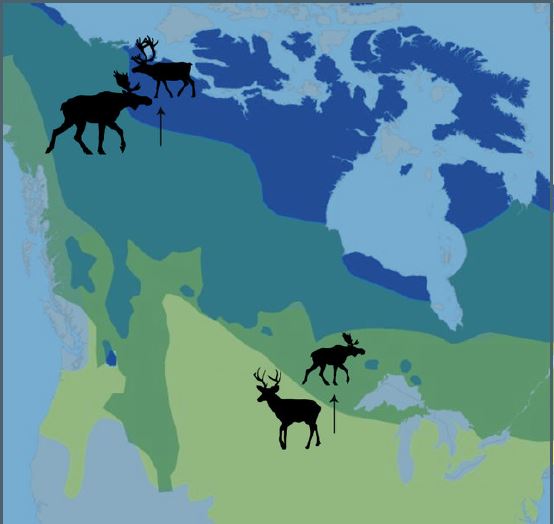Climate change will cause species to shift their ranges to survive. Although the impacts of range-shifting species can vary from minor to massive, considerations of species movements in the context of climate change has almost entirely focused on positive impacts. This Review uses invasion ecology theory to consider the impacts of shifting species and how to manage these shifts to protect the recipient communities as well as the survival of the shifters. As Earth's climate rapidly changes, species range shifts are considered key to species persistence. However, some range-shifting species will alter community structure and ecosystem processes. Communities are unlikely to shift as a whole, and partial shifts will disrupt species interactions and lead to trophic mismatches. Rather than developing new strategies to evaluate the potential impacts of range-shifting species, invasion ecology theory and risk assessment tools can be used to quantify the magnitude of the potential impacts of range shifters and define specific conservation goals in response. By adapting existing invasion risk assessment frameworks, characteristics shared with highimpact introductions can be identified and thus predict potential impacts. This will allow us to maintain biodiversity and ecosystem functioning most effectively despite a rapidly changing climate. There are fundamental differences between introduced and range-shifting species, primarily shared evolutionary histories between range shifters and their new community. Nevertheless, impacts can occur via analogous mechanisms, such as wide dispersal, community disturbance and low biotic resistance. As ranges shift in response to climate change, plans to facilitate advantageous movements and limit those that are problematic can be developed. However, both researchers and managers will likely need to adopt a more fluid and dynamic view of what constitutes a community, as differences in species' responses could result in communities with no current analogue. informacion[at]ebd.csic.es: Wallingford et al (2020) Adjusting the lens of invasion biology to anticipate impacts of climate-driven range shifts. Nature Climate Change DOI 10.1038/s41558-020-0768-2
https://www.nature.com/articles/s41558-020-0768-2








 Open Call for Research Projects in ICTS-Doñana!
Open Call for Research Projects in ICTS-Doñana!


